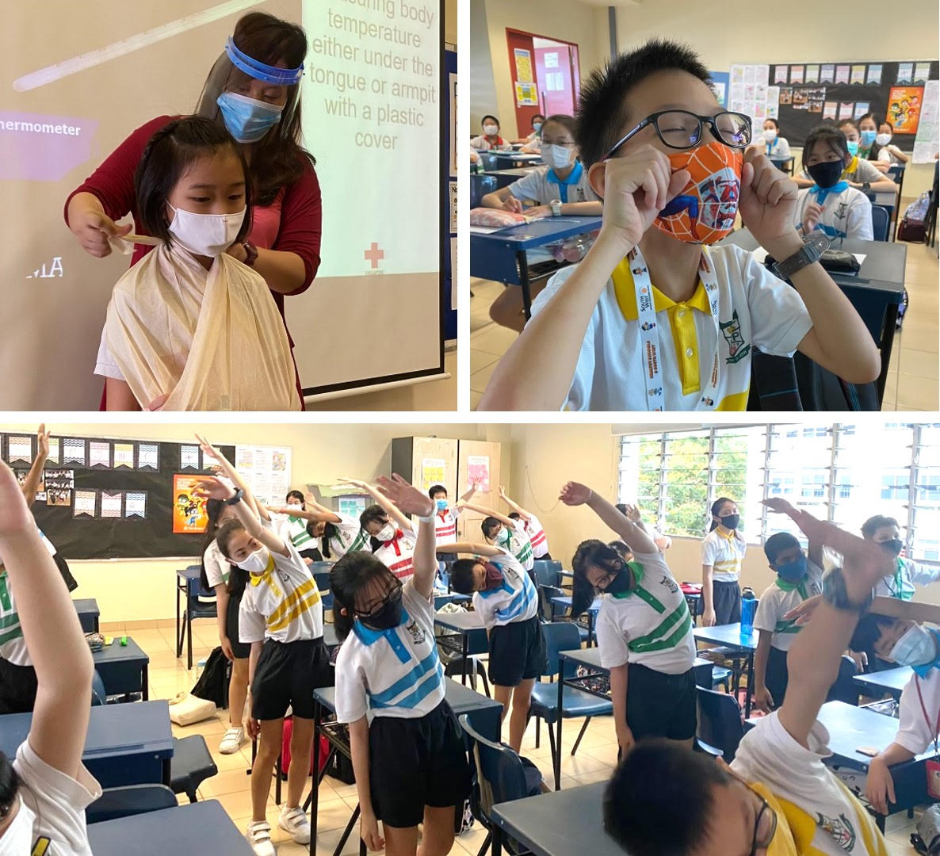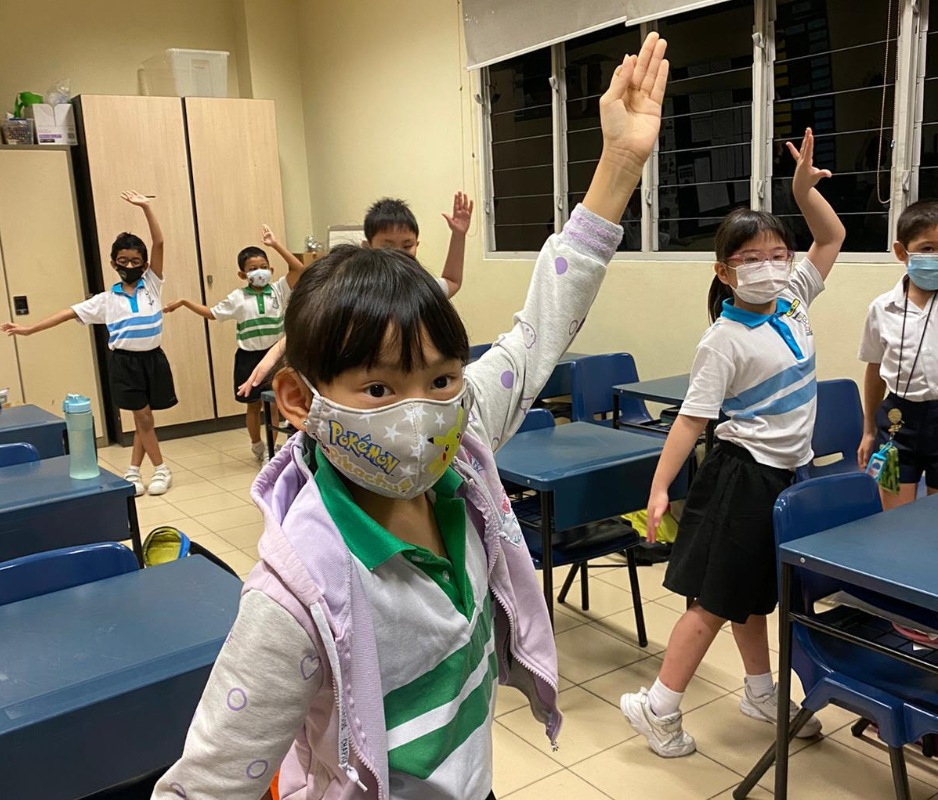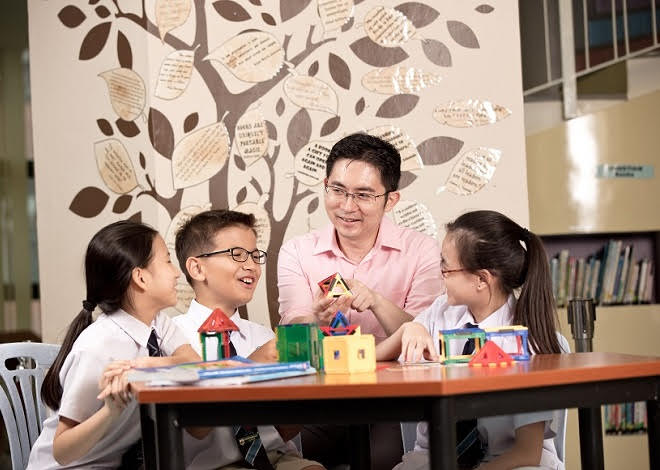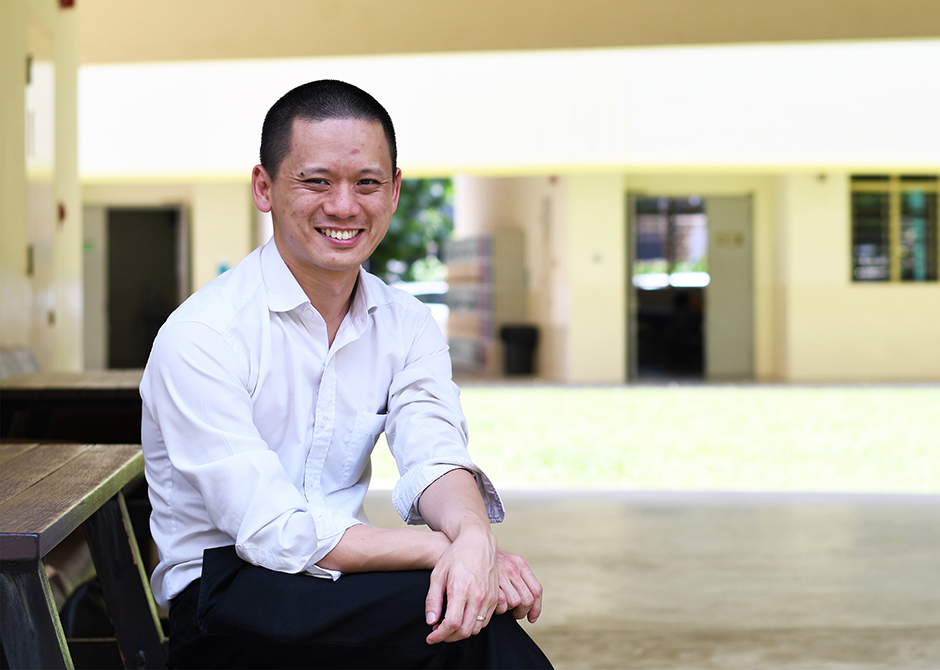In New Town Primary School, Co-Curricular Activities (CCAs) are an essential part of the school experience and something we all hold dearly.
Every Wednesday morning pre-COVID, the school grounds would be filled with the sound of students running, playing, singing, dancing – those two hours were when the school was most alive!
So when CCAs were suspended in Term 2 due to COVID-19, many of the students were disappointed. They had to stay in their classes to avoid intermingling. They missed the interaction with their friends from other classes and other levels.
When Term 3 approached, my colleagues and I were determined to bring the CCA experiences back for our students. As we couldn’t do things the usual way, we had to either go digital, or go for class-based CCAs.
Actually, we did both.
Instead of pushing all CCAs online, which may work for some, but not others, we redesigned the way CCAs were organised.
A different CCA every week
Instead of having a single CCA, the students will now have the chance to experience the full suite of learning experiences with a different CCA every week, with their classmates.
Each week, two (or more) CCAs teamed up to plan the week’s CCA session for the Primary 3, 4 and 5 students. In June, they had to plan both an in-class lesson, as well as a corresponding online lesson as the different levels were taking turns to do HBL. The levels that were in school would have their CCA activity in class under the guidance of a teacher.
We started the inter-CCA collaborations to get students to see their CCAs from a different perspective, so that even those who are from that particular CCA find that they can learn something new during the sessions.
In fact, the collaboration between the CCAs resulted in some really unique experiences.
For example, the four ethnic dance groups came together and taught the students the signature hand movements from each traditional dance. Students can’t dance and twirl around the class as yet, but safely separate behind their desks, they had fun trying to follow the hand movements. Their fingers got a nice workout, and they learnt the significance behind the different gestures, too.
Another unusual CCA session was planned by the IT Media Club and Art Club teachers. They put together a Virtual Art museum and introduced various famous art pieces to the students. While the Art teachers contributed their expertise to teach students the finer points of art appreciation, the IT Media Club teachers explained the rules of copyright for online images. As a hands-on activity, the students created their own art pieces for the virtual museum.
 From top left, clockwise: Introduction to First Aid session by the Red Cross, an enthusiastic performance during the Drama Club session, and stretching before a game by the Sports CCAs.
From top left, clockwise: Introduction to First Aid session by the Red Cross, an enthusiastic performance during the Drama Club session, and stretching before a game by the Sports CCAs.
Creative workarounds
Despite the constraints, my colleagues did their best to come up with ways to engage the children and expose them to new skills and learning opportunities.
In the session planned by the sports CCAs for example, we taught the children about the concept of territorial versus barrier sports and gave them the chance to take turns to play a modified net barrier game with a paper ball and paper plates in the classroom. The kids were engaged, and had fun – in fact, they continued with the game during recess on their own (with safe distancing).
The session by the Drama Club was also entertaining for students and teachers alike. The students were taught to perform an emotion using only their eyes (Remember they were all masked. What a challenge!) and posture. Some of the children really threw themselves into their roles and the class was filled with laughter at their antics. They loved the lesson.
So, could this new form of CCAs replace traditional CCAs in the future?
While these are all great alternatives given the constraints we face, these are workarounds for these unusual times.
It was great to give the students exposure to the different types of CCAs, but there is value in specialisation too. Just exposure to different CCAs would mean that students would lack depth and not attain a high level of skill in the area they are most interested in.
Once things are better, I hope to return to the CCAs we had in the past when the children could fully feel the satisfaction of working on a skill and improving over time, and experience the joy of putting up a play, performing a musical or camping in the great outdoors with their friends.
But our experience this year will not go to waste.
For one, I would like to consider having this rotating CCA experience for the younger students, perhaps to give them a taste of what the different CCAs are like before they choose one to focus on.
With the success of the inter-CCA partnerships this year, I believe my colleagues will be more open to trying out new collaborations next year and perhaps come up with new ideas and projects for their CCAs.
One thing is for sure, pandemic or not, we will continue to adapt and innovate to create meaningful learning experiences for our students.






